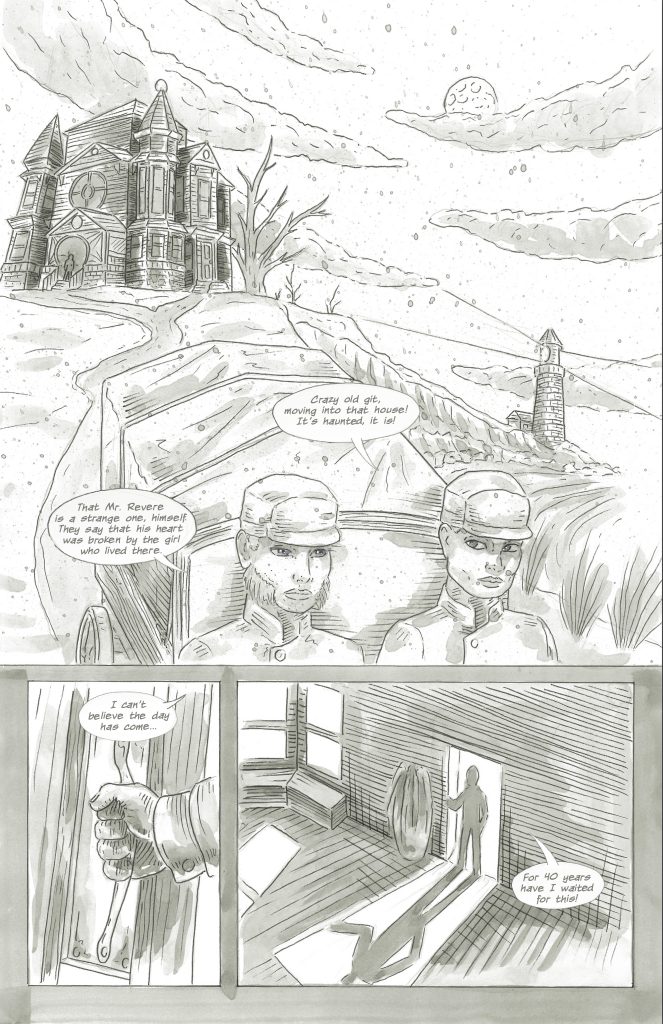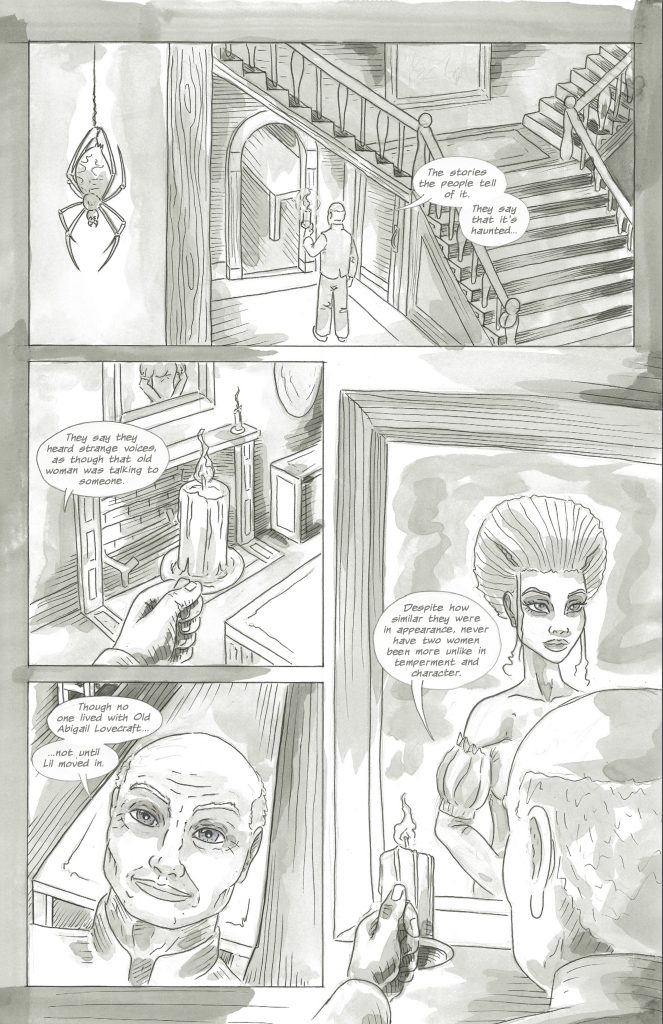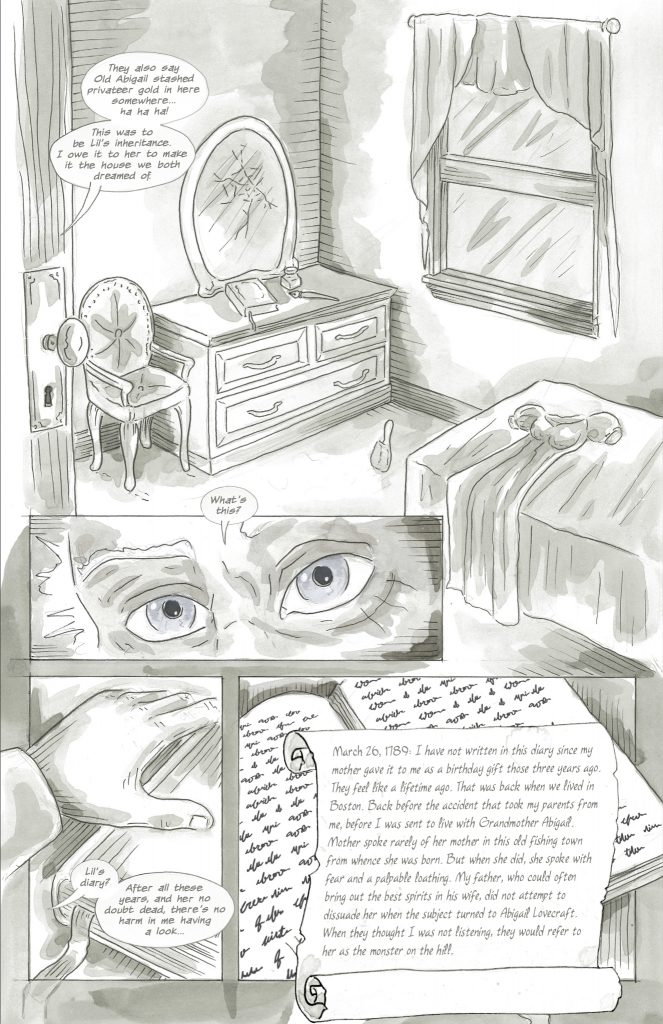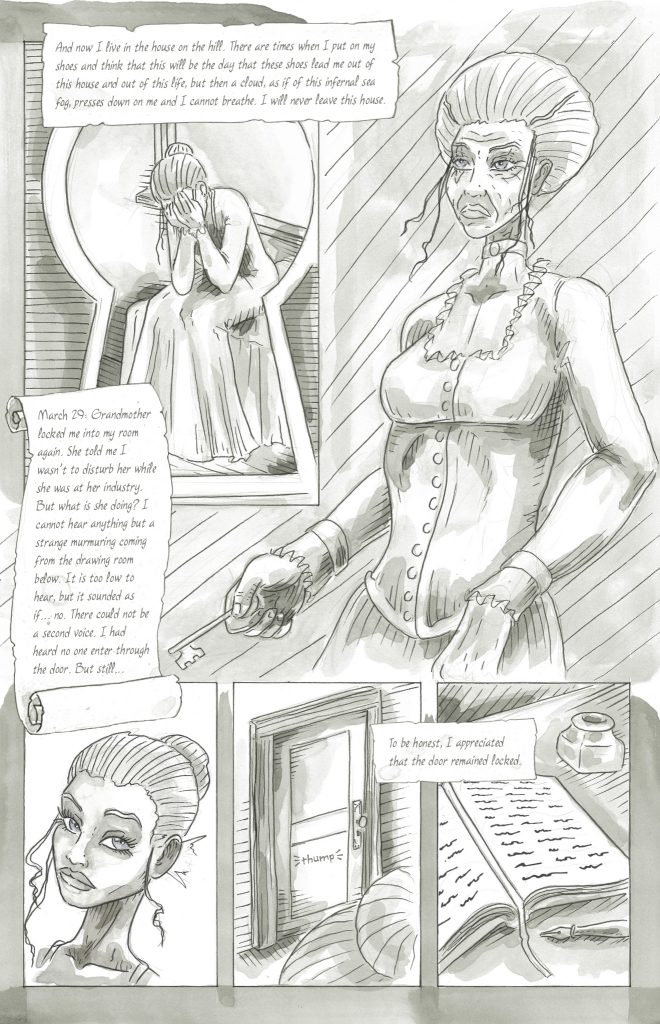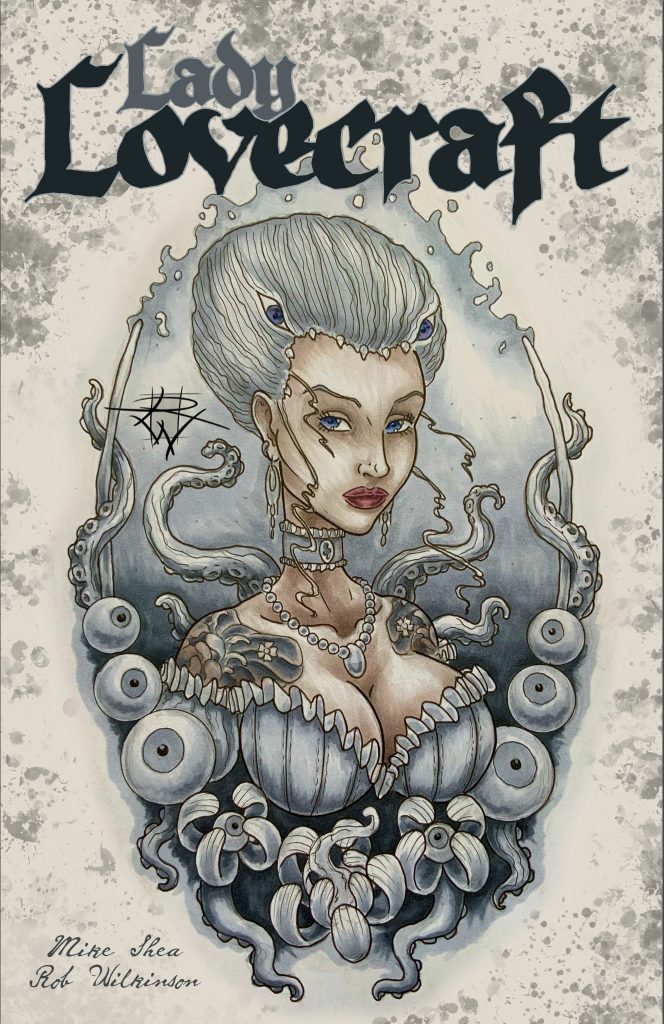
- Lady Lovecraft
- Written by Mike Shea
- Illustrated by Rob Wilkinson (@rw_arts_ri on Instagram)
- Coming soon to Kickstarter
In 1789, young Lilith Hawthorn was sent to live with her grandmother, Abigail Lovecraft. During her stay, Lilith met & caught the eye of Samuel Wyatt Revere, an ambitious young man with lofty goals. In time, she agreed to an engagement with Samuel, believing that he represented her best chance of escaping her oppressive life.
Grandmother Lovecraft was anything but a loving woman, and Lilith spent most of her nights- and a few of her days- locked in her room while her Grandmother worked “at her industry”. What that industry might have been, Lilith couldn’t guess, however there were many times she heard voices murmuring down below, from her Grandmother and… someone else.
Forty years later, Samuel Revere has returned to Lovecraft Manor, perhaps to learn the fate of his long lost fiancé, but also to lay claim to the fortune rumored to be hidden away. What he finds is Lilith’s diary, full of her experiences in the creepy old mansion and leading up to her mysterious disappearance. Written in Lilith’s own hand, Samuel discovers a creeping descent into…
Dare I say it?
Lovecraftian horror!
Duhn duhn duuuuhnnnnnnn!
Like everybody else over the last year, comic creators have spent a fair amount of time trying to keep themselves occupied in between larger projects. In the case of writer Mike Shea & artist Rob Wilkinson, that kind of downtime can have some wonderfully horrific results.
Already immersed in the theme through his work on Miskatonic High, Mike Shea’s narrative in Lady Lovecraft is a thing that ol’ Herbert himself could have been proud of. Told largely in a first person point of view, and most of that from Lilith’s perspective, Shea lets the story come out slowly. Nothing is given away for free, and what starts out as a pretty benign tale of family dysfunction gradually descends into lurking horror. The gothic tones are measured out carefully, and if some of the language comes out just a bit off, that could easily be my own perception as Shea holds firm to a period-based dialect and attitude. The language works to set the tone and the reveals are gradual, just a hint here and there until the full story is unfolded at the climax.
The artwork by Rob Wilkinson works within the confined tale, very much in keeping with Lilith’s own experiences in her grandmother’s manor. Lilith is the focus of most of the panels, the view hanging close in on her, only pulling back as she becomes more aware of her surroundings. Also, Wilkinson’s style seemed to work well within the period of the piece, and he does a good job of keeping to the small reveals in his illustrations. The work is more impressive to me after finding out that Lady Lovecraft is his first comicbook, and he took it on while on quarantine, in between gigs as a professional tattoo artist. If there’s one thing I would have liked to see, it would have been more contrast. Wilkinson’s lines are very light, with the pictures shaded in grays. While the effect works to nail the timeframe, resembling the inked illustrations often found in old books, the lack of contrast between light & dark loses some of the detail. I think that a heavier use of darker, more concealing shadows might have gone even farther to establish the gothic tones of the book.
Overall, Lady Lovecraft was a lot of fun to read. Going into it, expectations related to the book’s own title might have lessened the impact of some of the surprises but it was a pretty effective nod to the man who defined “lurking horror”, H.P. Lovecraft himself. Lately, it seems like there’s been a bit of a revival of Lovecraft’s work as shows like Lovecraft Country (itself based on the popular novel by Matt Ruff) take center stage despite contraversy surrounding the author himself.
Final Score: 9/13
